Faithful son of the Fatherland - Marshal Semen Mikhailovich Budyonny
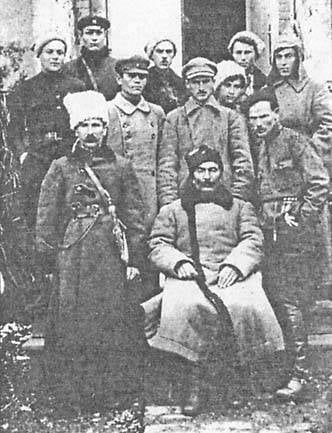
In the young Soviet state, he was a man of legend, the “father” of the red cavalry, the commander of the “men”, abroad he was called “Red Murat”.
But after the end of the “Stalin era,” the image of a “horseman”, a close cavalryman, gradually began to emerge. Even a whole layer of myths and anecdotes about the marshal was formed.
A review of his merits began - they remembered that the idea of creating the red cavalry belonged to Trotsky-Bronstein, that the real founder of the Red Army Cavalry Corps was B. Dumenko (a talented commander was shot on charges of anti-Semitism and preparation for the rebellion, although Stalin tried to justify him , but the position of Trotsky-Bronshein were much stronger), Budyonny was his deputy. “Red Murat” was accused of lack of talent, of the failure of the campaign against Warsaw in the 1920 year, since he allegedly did not fulfill the order of Tukhachevsky and did not transfer the Cavalry Army from under Lvov to Warsaw.
The myth was created that Budyonny resisted the modernization of the Red Army, citing the famous phrase, whose affiliation to the marshal was not proven - “The horse will show itself”. The fact of his “insolvency” in military affairs is given - an insignificant post held at the final stage of the Great Patriotic War - commander of the cavalry of the Soviet Army.
The beginning of the military path
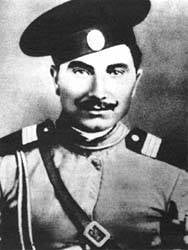 Born in the year 1883 on the Don, on the farm Kozyurin of the village of Platovskaya (now Rostov region), in a poor peasant family. In 1903, he was drafted into the army, served in the Far East in the Primorsky Dragoon Regiment, and remained there for long service. Participated in the Russian-Japanese war as part of the 26 Don Cossack Regiment.
Born in the year 1883 on the Don, on the farm Kozyurin of the village of Platovskaya (now Rostov region), in a poor peasant family. In 1903, he was drafted into the army, served in the Far East in the Primorsky Dragoon Regiment, and remained there for long service. Participated in the Russian-Japanese war as part of the 26 Don Cossack Regiment. In 1907, he, as the best rider of the regiment, was sent to the capital, to the officer's cavalry school, for courses of riders of the lower ranks. He studied them until 1908. Then, up to 1914, he served in his Primorsky Dragoon Regiment.
In World War I fought on three fronts - the German, Austrian and Caucasian non-commissioned officer of the 18 th Dragoon Seversky Regiment. Budyonny was awarded for his bravery by the crosses of St. George (soldier’s “Egory”) of four degrees (“full bow”) and four St. George’s medals.
In the summer of 1917, as part of the Caucasian Cavalry Division, Budyonny arrived in the city of Minsk, where he was elected chairman of the regimental committee and deputy chairman of the divisional committee. In August, 1917, together with M.V. Frunze, led the disarmament of the echelons of the Kornilov troops (the Kornilov revolt) in Orsha. After the October Revolution, he returned to Don, in the village of Platovskaya, where he was elected a member of the executive committee of the Salsk District Council and appointed head of the district land department.
Civil war
In February, S. M. Budyonny, 1918, created a cavalry detachment, which acted against the White Army in the Don area. The detachment quickly grew into a regiment, then a brigade, and eventually became a division that successfully operated under Tsaritsyn in 1918 — early 1919. In the second half of June, the Equestrian Corps was established 1919. BM Dumenko became his commander, but a month later he was seriously wounded, and his deputy, Budyonny, commanded the corps. The corps participated in heavy battles with the Caucasian army of General P. N. Wrangel. Therefore, the military lack of talent of Budyonny, if it were a reality, would be revealed very quickly, especially if one considers that some of the best white cavalry generals fought against him - the Mammoths, the Golubintsev, the chieftain Ulagay.
But the corps under the command of the peasant Budyonny acted decisively, skillfully, remaining the most combat-ready unit of the 10 army defending Tsaritsyn. Budyonny's divisions covered the withdrawal of the army, invariably appearing on the most threatened areas, and did not allow units of the Wrangel Caucasian Army to reach the flank and rear of the 10 Army. Budyonny was a principled opponent of White’s surrender of Tsaritsyn and offered to counter-strike the enemy’s flank. Budyonny’s plan had reasonable grounds and chances for success, since the Cossack units that had stormed Tsaritsyn were exhausted and suffered serious losses. Wrangel wrote about this directly to Denikin. But the commander Klyuev showed hesitancy and ordered to leave Tsaritsyn. The retreat of the 10 Army was poorly organized, and Budyonny had to create special barrage detachments in order to prevent the disorganization of rifle units. As a result: the 10-I army did not collapse, the left flank of the red Southern Front was not bare, and this is a merit of SM Budyonny.
In the summer - autumn 1919, the corps successfully fought against the forces of the Don Army. During the Voronezh-Kastorny operation (October - November 1919), the Equestrian corps, together with the divisions of the 8 Army, defeated the Cossack units of generals Mamontov and Shkuro. Parts of the corps occupied the city of Voronezh, closing the 100-kilometer gap in the positions of the Red Army troops in the Moscow area. The victories of the Budenny Horse Cavalry over the troops of General Denikin near Voronezh and Kastornaya accelerated the rout of the enemy on the Don.
In November 1919, the corps was reformed into the 1 th Cavalry Army, Budyonny was appointed commander of this army, he commanded the army until the fall of 1923.
In December 1919, the Cavalry Army occupied Rostov, the Cossacks gave it away without a fight, leaving the Don. Parts of Budyonny tried to force the Don, but suffered a serious defeat from the White Guard divisions. But here it’s probably not Budyonny’s fault — the commander of the Southwestern Front, Shorin, ordered the Don to force into the forehead, but to force a major water barrier, when the other shore was occupied by the enemy’s defensive parts, only cavalry was not easy. Whatever it was, the defeat of the white armies in southern Russia suffered largely due to the actions of the Conarmia, which made a deep detour around the white troops in February 1920 of the year.
The army of Budyonny did not act very well against Wrangel in the Crimea - the army could not prevent the withdrawal of the main white forces for the Crimean isthmuses. But it was not only Budenny’s fault that was in many respects that the actions of the Fifteen Mironov’s 2 Conarmia were wrong. Due to his slowness, Wrangel managed to withdraw his troops for the fortifications of Perekop.
War with poland
In the war with Poland, Budyonny's army as part of the South-Western Front operated on the southern flank and quite successfully. Budyonny broke through the defensive positions of the Polish troops and cut the supply lines of the Kiev group of Poles, launching an attack on Lviv.
In this war, the legend of the “invincible” strategist Tukhachevsky was destroyed. Tukhachevsky was not critical of reports received by the headquarters of the Western Front that the Poles had been completely defeated and were running in panic. Budyonny more reasonably assessed the state of affairs, as evidenced by the lines from his memories: “From the operational reports of the Western Front we saw that the Polish troops, retreating, did not suffer heavy losses, the impression was created that before the armies of the Western Front the enemy was withdrawing, retaining strength for decisive battles ... ".
In mid-August, the Polish Army struck a blow at the Red Army troops that had bypassed Warsaw from the north. The right flank of Tukhachevsky was crushed. Tukhachevsky demands to withdraw Budyonny’s army from the battle and prepare it for a strike on Lublin. At this time, the 1-I Cavalry Army was fighting on the Bug River and could not just get out of the battle. As Budyonny wrote: “It was physically impossible to get out of the battle for one day and make a hundred-kilometer march so that August 20 could concentrate in the specified area. And if this impossible happened, then with the access to the Vladimir-Volynskiy, the Konarmia would not be able to take part in the operation against the Lublin enemy group, which operated in the Brest region. ”
The war was lost, but Budyonny personally did everything to win, the troops entrusted to him acted quite successfully.
20-30-s
In 1921-1923 S. Budyonny - member of the PBC, and then deputy commander of the North Caucasus Military District. He did a lot of work on the organization and management of horse plants, which, as a result of many years of work, brought out new breeds of horses - Budennovsk and Terek. In 1923, Budyonny was appointed Assistant Commander-in-Chief of the Red Army for cavalry and a member of the Revolutionary Military Council of the USSR. In 1924-1937 Budyonny was appointed inspector of the cavalry of the Red Army. In 1932, he graduated from the Military Academy. M. V. Frunze.
From 1937 to 1939, Budyonny was appointed commander of the Moscow Military District, from 1939 he was a member of the Main Military Council of the USSR NKO, Deputy Commissar, and from August 1940 was First Deputy Commissar of Defense of the USSR. Budyonny noted the important role of cavalry in the war of maneuver, while at the same time advocating the technical re-equipment of the army, initiated the formation of cavalry-mechanized units.
He correctly identified the role of cavalry in a future war: “The reasons for the rise or decline of cavalry should be sought in relation to the basic properties of this type of troops to the basic data of the situation of a certain historical period. In all cases, when the war acquired a maneuverable character, and the operational situation required the presence of mobile troops and decisive actions, the cavalry masses became one of the decisive elements of the armed forces. This is manifested by a known pattern throughout. stories cavalry; as soon as the possibility of a maneuverable war developed, the cavalry’s role immediately increased, and some operations ended with its blows ... We persistently fight for the preservation of powerful independent red cavalry and for its further strengthening solely because sober, a real assessment of the situation convinces us of the undoubted need have such a cavalry in the system of our Armed Forces ".
Unfortunately, the opinion of Budenny about the need to maintain a strong cavalry was not fully appreciated by the country's leadership. In the late 1930s, the reduction of cavalry units began, 4 corps and 13 cavalry divisions remained for the war. The Great War confirmed that he was right - the mechanized corps turned out to be less stable than the cavalry units. The cavalry divisions were not dependent on roads and fuel, like mechanized units. They were more mobile and maneuverable than motorized rifle divisions. They successfully acted against the enemy in a wooded and mountainous area, successfully carried out raids behind enemy lines, in conjunction with tank units developed a breakthrough of enemy positions, developed the offensive and the coverage of parts of the Nazis.
By the way, the Wehrmacht also appreciated the importance of the cavities and quite seriously increased their numbers in the war. The Red cavalry went through the whole war and ended it on the banks of the Oder. Cavalry commanders Belov, Oslikovsky, Dovator entered the elite of Soviet commanders.
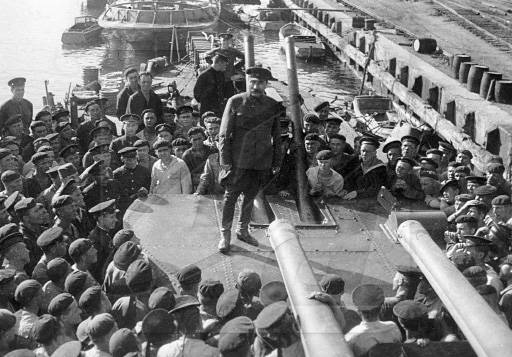
Marshal of the Soviet Union Semyon Budyonny speaks to the sailors of the Black Sea fleetAugust 1942.
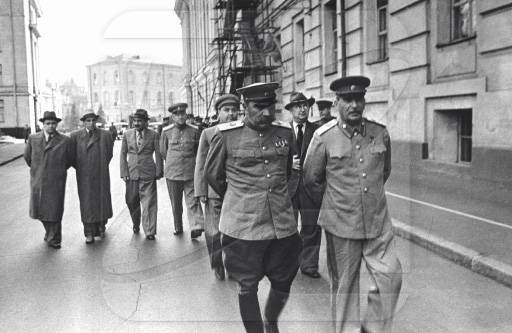
Joseph Stalin, Semyon Budyonny (in the foreground), Lavrenty Beria, Nikolai Bulganin (in the background), Anastas Mikoyan are heading to Red Square for a parade in honor of the Tankman Day.
Great War
During the Great Patriotic War, Budyonny was a member of the Supreme Command Headquarters. He was appointed commander of a group of troops of the armies of the Reserve Headquarters (June 1941 of the year), then - Commander-in-Chief of the Southwestern Forces (10 July - September 1941)
The southwestern direction quite successfully restrained the onslaught of the nazis, counterattacked. In the North, in the Baltic States, the troops also operated under the general command of Voroshilov. As a result, in Berlin they realized that the troops of the Army Group Center were in great danger - there was an opportunity to strike from the flanks, from the North and from the South. Blitzkrieg was failed, Hitler was forced to throw down Guderian’s 2 tank group to the south in order to go to the flank and rear of the Soviet group that defended Kiev.
On September 11, towards the Guderian base, from the Kremenchug bridgehead, launched an attack by the division of the 1-th Kleist tank group. Both tank groups joined the 16 of September, closing the ring around Kiev - the troops of the South-Western Front were in the boiler, the Red Army suffered heavy losses. But, having connected considerable forces of the enemy with heavy battles, she won the time to strengthen the defense in the central strategic direction.
Marshal S. M. Budenny warned GHQ about the danger threatening the troops of the South-Western Front, recommended leaving Kiev and withdrawing the army, that is, it offered to wage not a positional war, but a maneuverable one. So, when Guderian’s tanks broke into Romny, General Kirponos addressed Marshal BM Shaposhnikov, Chief of the General Staff, with a request to allow Kiev’s evacuation and the withdrawal of troops, however, was refused. Budyonny supported his subordinate and, in turn, telegraphed to GHQ: “For my part, I believe that by this time, the enemy’s plan for the scope and surroundings of the South-Western Front from Novgorod-Seversky and Kremenchug was fully defined. To counter this plan, it is necessary to create a strong group of troops. The South-Western Front is not able to do this. If the Supreme Headquarters, in turn, is not able to concentrate such a strong group at the moment, the withdrawal for the South-Western Front is quite mature ... A delay with the withdrawal of the South-Western Front can lead to the loss of troops and a huge amount of equipment. ” .
Unfortunately, the situation in Moscow was seen differently, and even such a talented general staff officer as B. M. Shaposhnikov could not make out in time the impending danger. You can add that Budyonny had great courage to defend his point of view, because the marshal was aware of Stalin's desire to defend Kiev no matter what. A day after this telegram, he was removed from this post, and a few days later the troops of the front got into the ring of encirclement.
In September – October, 1941 of the year Budyonny was appointed commander of the Reserve Front. On September 30, the Wehrmacht launched Operation Typhoon, the Wehrmacht broke through the defenses of the Soviet troops, and in the Vyazma region the troops of the Western (Konev) and Reserve Fronts were surrounded. It was a disaster, but Budyonny cannot be blamed for this. First, the intelligence of the General Staff could not reveal the concentration areas of the Wehrmacht strike groups, so the troops available were stretched across the front and could not withstand the impact of such power when the enemy’s 3-4 division (in the main directions of strikes) fell on the defending division. Secondly, Budyonny could not use his favorite tactics of maneuver, it was impossible to retreat. Blaming him for military incompetence is stupid, Konev became one of the most famous war heroes, but he could not do anything.
In fact, only in the North Caucasus he was appointed commander in chief of the forces of the North Caucasus (April – May 1942 of the year) and commander of the North Caucasus Front (May – August 1942 of the year), he was able to demonstrate his skill. When the Wehrmacht reached the Caucasus in July 1942, Budyonny offered to withdraw troops to the borders of the Main Caucasus Range and the Terek, reducing the overly extended front, and also form two reserve armies in the Grozny region. Stalin considered these proposals rational and approved them. On the planned Budyon line, the troops retreated in August 1942, and as a result of fierce fighting, they stopped the enemy.
In January, Budyonny 1943 became the commander in chief of the cavalry, apparently Stalin decided that it was time to show his skills to the young. The merit of Budyonny is that he helped the Red Army to survive and learn how to fight.
The most objective assessment of the activities of Marshal Budyonny in the Great Patriotic War can be called the words of the Chief of Staff of the South-Western direction of General Pokrovsky: “He did not propose solutions, he did not understand the situation in such a way as to propose a solution, but when he was told, proposed certain solutions, the program , this or that, action, he, firstly, he quickly grasped the situation and, secondly, as a rule, supported the most rational decisions. And he did it with sufficient determination. ”
The son of the Russian peasantry did not disappoint his homeland. He honestly served the Russian Empire on the margins of the Russo-Japanese, World War I, with courage and ability earned himself an award. He supported the construction of a new state and honestly served him.
After the war, he was decreed by the Presidium of the USSR Supreme Council from 1 in February 1958, 24 in April 1963 and 22 in February 1968 was awarded the title Hero of the Soviet Union and became Three times Hero of the USSR. He completely deserved it.
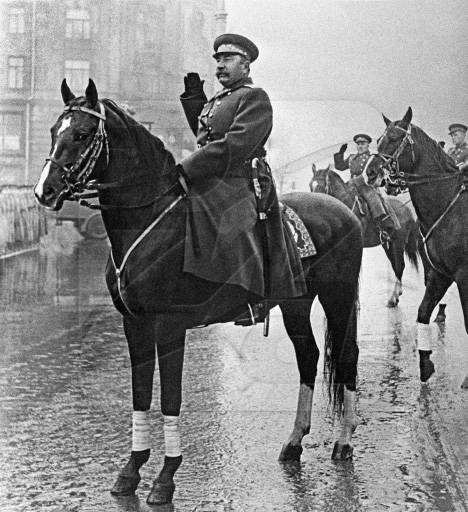
Soviet military leader, Marshal of the Soviet Union (1935) Semyon Budyonny takes the parade on Red Square in Moscow on November 7 of the year 1947.
From the personal qualities of this worthy person can be noted personal courage and courage (for example: in July, 1916, Budyonny received the St. George Cross of 1 degree for having brought Turkish soldiers from 7 to the enemy’s rear with four comrades). There is a legend that once the marshal decided to "touch" the security officers. The Marshal met the armed night guests with a sword and a shout, “Who's first !!!”, rushed at the guests (according to another version, he put a machine gun out the window). Those hurried to retire. The next morning, Lawrence Pavlovich reported to Stalin about the need to arrest Budyonny (and described the event in colors). Comrade Stalin replied: “Well done, Simon! So they should be! ”They did not disturb Budyonny anymore. According to another version, having shot the security officers who came after him, Budyonny rushed to call Stalin: “Joseph, counterrevolution! They came to arrest me! I won't give up alive! ”Then Stalin gave the order to leave Budyonny alone. Most likely, this is a historical anecdote, but even he characterizes Budyonny as a very brave man.
He played virtuoso on the accordion, danced perfectly - during the reception of the Soviet delegation in Turkey, the Turks performed folk dances, and then suggested that the Russians respond in the same way. And Budyonny, despite his age, danced, puffing for everyone. After this incident, Voroshilov ordered the introduction of dance lessons in all military colleges.
He owned three languages, read a lot, collected a large library. I did not tolerate drunkenness. The food was unpretentious.
- http://topwar.ru"rel =" nofollow ">http://topwar.ru
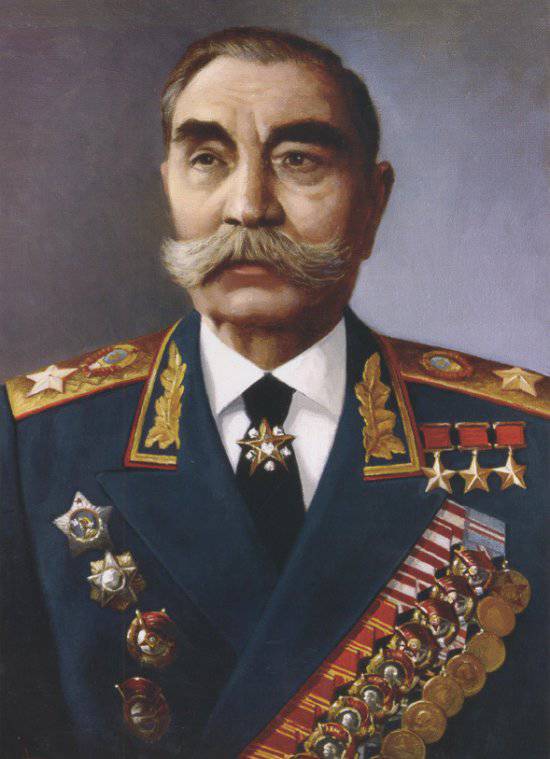
Information